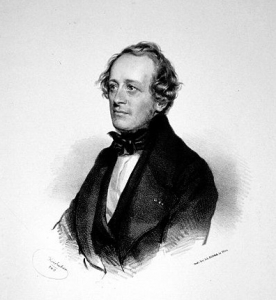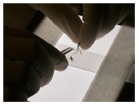
The Elements
 THE HISTORY & PRINCIPLE: The origins of Hair Restoration Surgery (HRS) can be traced back to 1822 when J. Dieffenbach investigated and ultimately proved the concept of autotransplantation using goose quills as trephines in Wurzburg, Germany. The first documented application of this concept to male pattern baldness (MPB) was subsequently carried out by Dr. Norman Orentreich when, in 1952, he submitted his surprising finding while conducting a study on vitiligo: a punched skin graft continued to grow hair after having been transplanted from a hair-bearing area to an alopecic area. Deeming his findings “impossible,” his manuscript was promptly rejected by medical reviewers.
THE HISTORY & PRINCIPLE: The origins of Hair Restoration Surgery (HRS) can be traced back to 1822 when J. Dieffenbach investigated and ultimately proved the concept of autotransplantation using goose quills as trephines in Wurzburg, Germany. The first documented application of this concept to male pattern baldness (MPB) was subsequently carried out by Dr. Norman Orentreich when, in 1952, he submitted his surprising finding while conducting a study on vitiligo: a punched skin graft continued to grow hair after having been transplanted from a hair-bearing area to an alopecic area. Deeming his findings “impossible,” his manuscript was promptly rejected by medical reviewers.
Today, HRS rests on this well-established principle of “donor dominance” describing how transplanted hair follicles (including their roots) continue to grow as they would have in their original location. Therefore, even for the most advanced cases of male pattern baldness in which only a horseshoe-shaped rim of hair persists, hair follicles taken from the region of stable hair growth (the donor area) will take root and grow in the area in which they are transplanted (the recipient area). This phenomenon, coupled with careful surgical technique, has allowed a number of patients to benefit from HRS, including men and women of all ages.
SEDATION: At the beginning of the procedure, the patient is given appropriate medications to help reduce anxiety and minimize any discomfort. A local anesthetic is first combined with a solution to neutralize the pH (thus, reducing any sting) before it is applied using the finest acupuncture-sized needles. Throughout the procedure the local anesthetic is re-applied to ensure continuous comfort. Patients remain awake (but comfortably restful) during the prodedure, pausing for bathroom breaks and lunch. Overall, patients generally equate the ease of their experience to those at the dentist.
DONOR HARVEST: Currently, Dr. Wesley uses two methods to remove hair follicles, or follicular units (FUs) from the “donor area”: Follicular Unit Transplantation (FUT) with strip harvesting and Follicular Unit Extraction (FUE). Each of these methods is explained in greater detail under their respective headings. He is also investigating an innovative surgical method that may result in a completely scar-free result after FU harvesting, or removal, from the donor region.
RECIPIENT PATTERN DESIGN: This stage best reveals the surgeon’s skill and artistry. Following the exact angle and direction of any pre-existing hairs when creating sites into which the transplanted grafts are placed, the surgeon designs a natural-appearing pattern that will most effectively address the patient’s hair loss and improve their appearance.
PLANTING OF GRAFTS: Following a gradient of hair thickness in which the finer hairs rest in front of more coarse hairs, each graft is delicately placed in its new recipient site. Unlike traditional “pluggy” transplants, these techniques help ensure a natural appearance in men and women, young and old.
POST-OPERATIVE RECOVERY: To help improve the healing process, patients are given the option of wearing a turban-like bandage overnight. They are issued three types of pain medication to tailor their analgesia. The following morning patients return for a gentle hair wash and bandage removal. Sutures are typically removed 8 to 10 days post-operatively either in our office or (if the patient has traveled a great distance to have the surgery with our practice) at their local qualified physician’s office.
HAIR GROWTH: Contributing to the naturalness of the results is the gradual manner in which the transplanted hairs grow. Generally, patients will begin to see fine vellus hairs (like “peach fuzz”) growing three to four months after the follicles are initially placed. After six months, patients will have an idea of the results. However, it is not until 9-12 months post-operatively when the patient will appreciate full growth.























